Making Homemade Stocks with Kitchen Scraps
39 min read Turn trimmings into rich stocks: smart scrap-saving tips, ideal ratios, simmering techniques, freezer hacks, and flavor boosters for budget-friendly, zero-waste cooking. October 14, 2025 00:07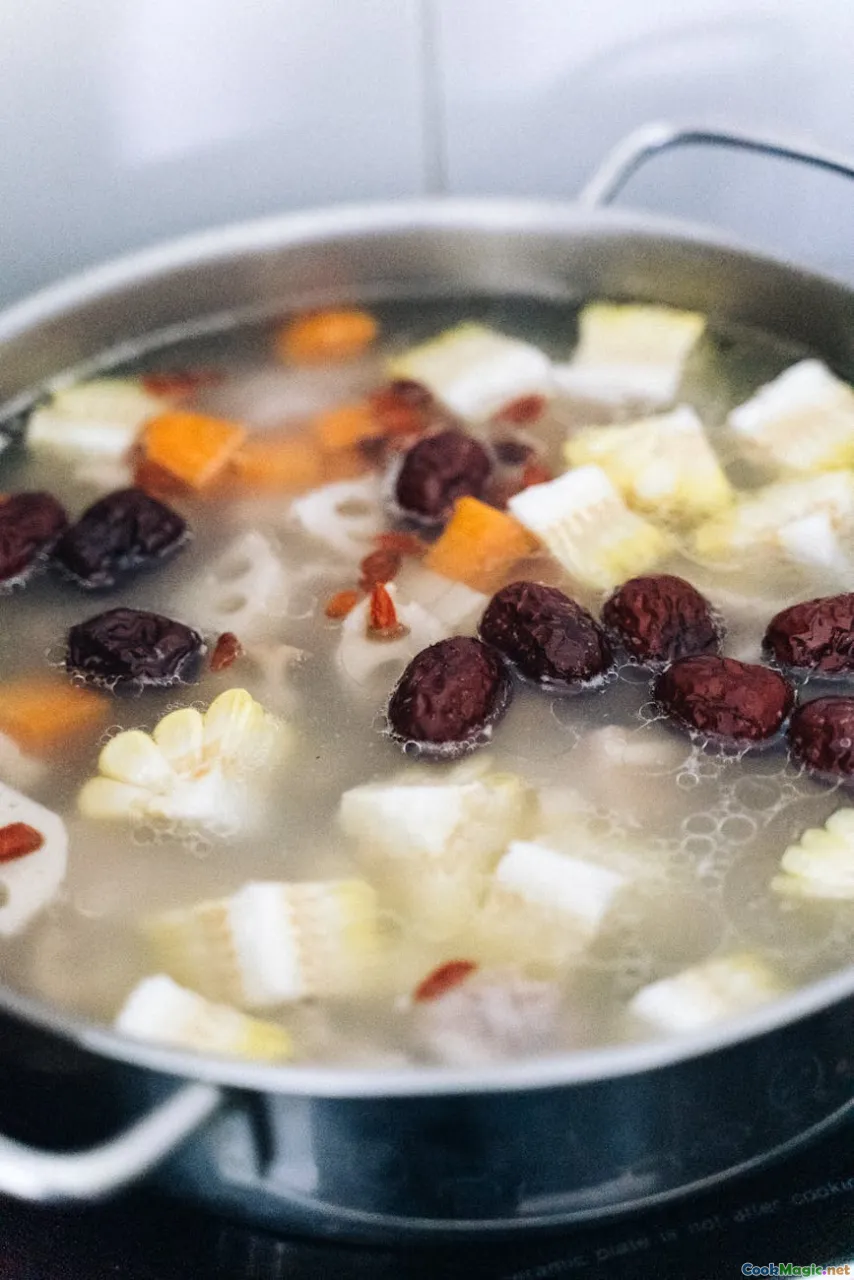
Steam beads on the window, a slow pulse of bubbles nudges the surface, and the air tastes like roasted chicken and thyme. When I began cooking professionally, the stock pot was the kitchen’s heartbeat. Long after service, when the dining room emptied and the dishwashers stacked the last pans, the pot kept whispering. Every trim, shell, rind, and bone earned a second life there. I learned that flavor doesn’t start on the plate; it begins with the scraps most people throw away.
Why Stock Matters More Than You Think
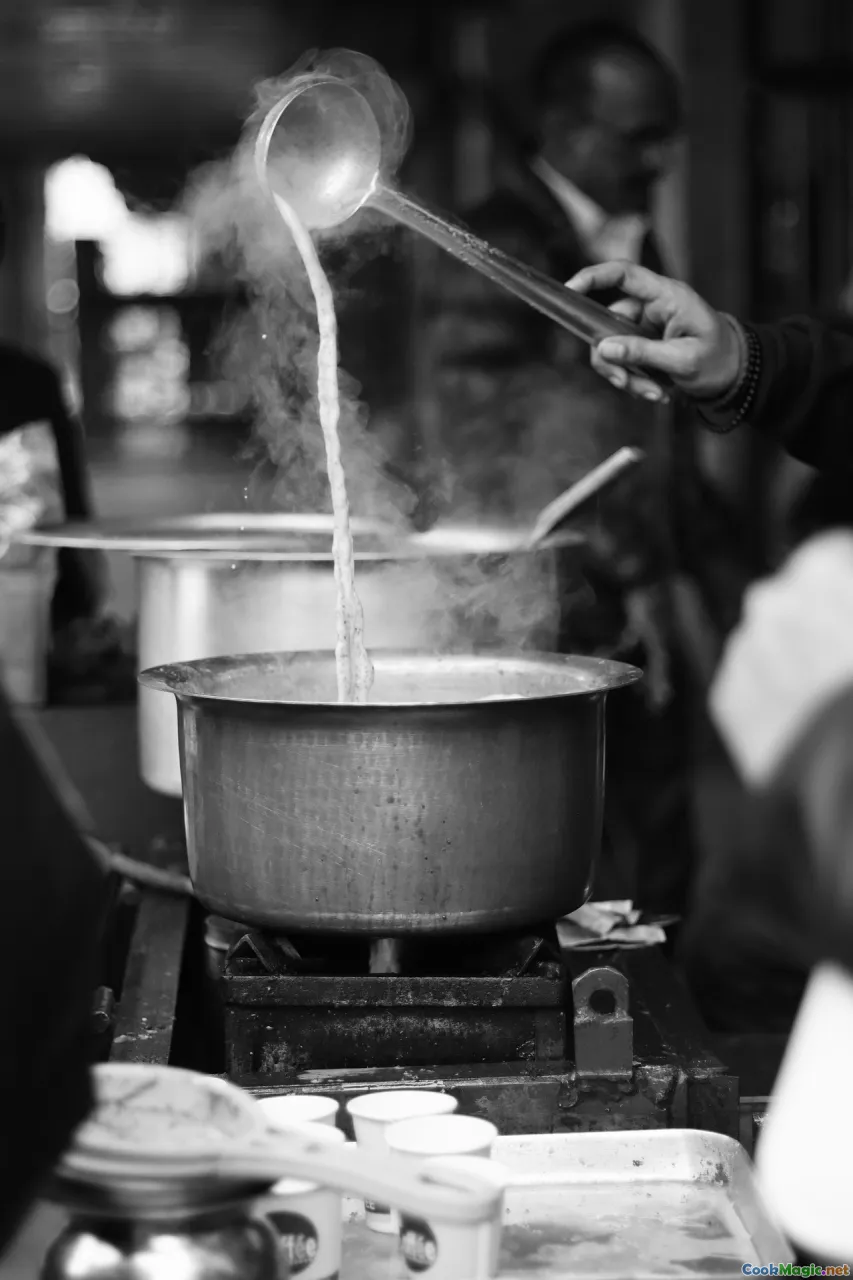
Every cuisine carries a story about simmering. In France, Escoffier called stock the foundation of cooking—fonds de cuisine—because it is quite literally the base that holds everything up. In Italy, grandmothers keep brodo gently swaying for tortellini in brodo at Christmas. In China, a master stock might be older than the cook tending it, a living broth refreshed and reused for generations. In Mexico, a pot of caldo de pollo anchors a Sunday family meal, brightened with cilantro stems and wedges of lime. There is nothing generic about these liquids; each pot tastes like the culture and place it comes from.
At home, stock is a quiet act of thrift and care. Onion skins that painted a stew gold once can paint your stock amber. Shrimp shells carry the scent of a coastal market. Parmigiano rinds—gnawed smooth—promise a nutty backnote. The simmer isn’t just practical. It’s emotional: an edible journal of the week’s cooking.
Harnessing kitchen scraps for stock is as much about knowing what to save as it is about technique. The reward is a pantry of liquid seasonings: vegetable stock for risotto, chicken stock for pan sauces, shellfish stock for a bisque you’ll swear came from a seaside bistro. Smart scraps make powerful broth.
Scrap Intelligence: What to Save, What to Skip
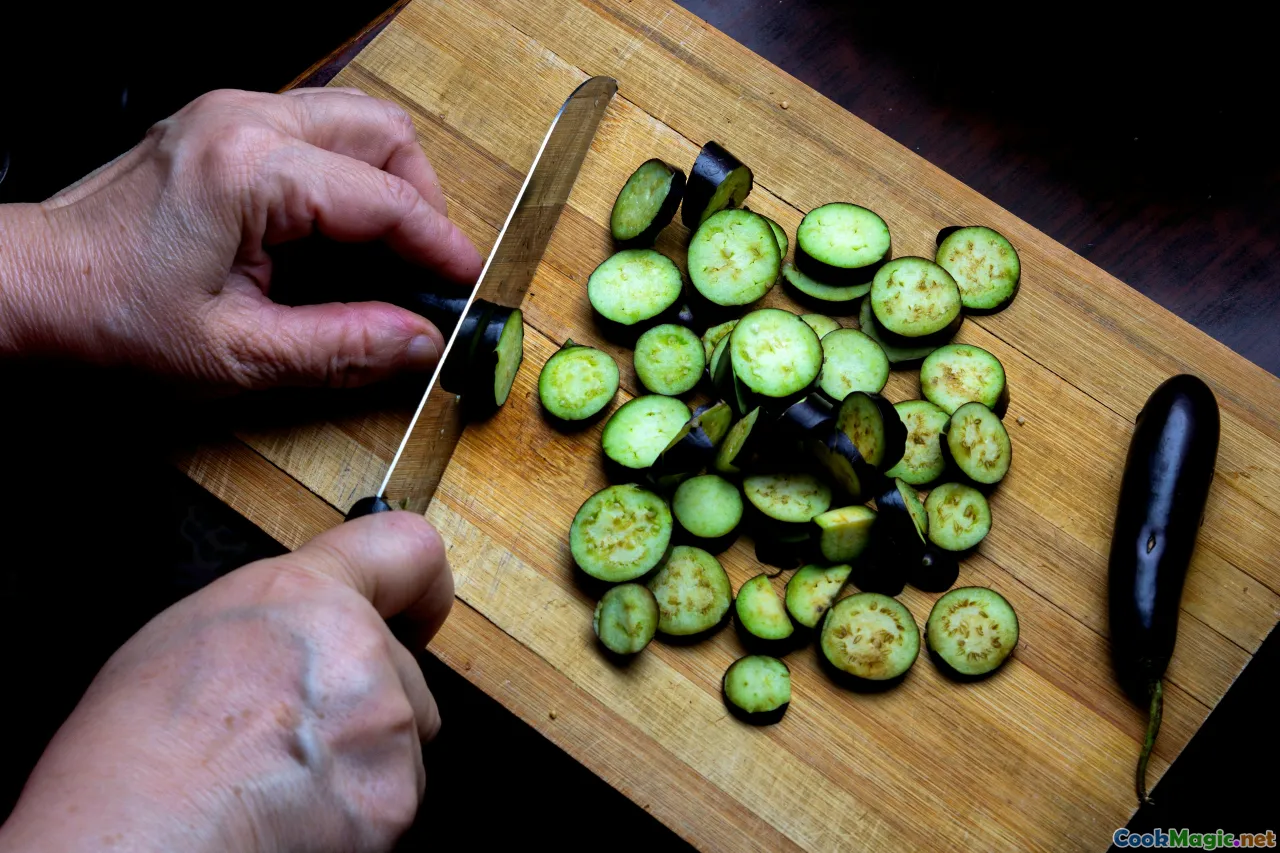
Scraps aren’t all created equal. Think in categories—sweet, savory, sea, smoky—and you’ll build stocks with personality.
Save these with confidence:
- Onion skins and ends: Impart color and a gentle sweetness. Yellow onion skins give rich amber; red onion skins tint rosé if you add too many. The papery skins also carry antioxidants that deepen hue.
- Leek greens: Wash thoroughly, then knot into bundles. They add an elegant allium sweetness without the sulfur of too much onion.
- Carrot peels and tips: Sweetness and a toasty aroma, especially when the peels are from carrots roasted earlier in the week.
- Celery leaves and bases: Bring herbaceous, almost peppery brightness. The bases also carry natural sodium—be mindful of salting later.
- Garlic cloves (lightly crushed) and skins: Round, savory bass notes. The skins can add color. Avoid burnt garlic—bitterness lingers.
- Mushroom stems: Especially from cremini, shiitake, oyster. They deliver foresty depth and umami. Dried shiitake stems are gold.
- Herb stems: Parsley, cilantro, thyme, dill, basil. Stems hold oils and perfume. A handful is plenty.
- Corn cobs: Shared summer sweetness. Simmered cobs give a creamy, fresh-corn aroma—perfect for chowders.
- Tomato cores and skins: Provide gentle acidity and a sunset hue. Roasted tomato trimmings are even better.
- Parmesan rinds: Umami bombs. Add in the last hour to melt in their nuttiness.
- Ginger peels and scallion roots: Excellent for Asian-leaning broths. Wash well.
- Meat bones and roasted carcasses: Chicken, turkey, duck, beef knuckles, veal bones. Roasted bones bring the caramel notes you want in sauces.
- Ham bones and smoked poultry frames: Smoky backbone for beans, greens, and winter soups.
- Shellfish shells and heads: Shrimp, crab, lobster shells concentrate oceany sweetness.
- Fish frames and heads: Cleaner and more delicate than shellfish; best from white-fleshed, non-oily fish.
Use sparingly or avoid:
- Brassicas: Kale stems, broccoli, cauliflower can turn bitter or sulfurous with long simmering. Use only small amounts or go for a quick, light broth.
- Potato peels: Make stock cloudy and starchy without adding much flavor.
- Beet skins: Give sweetness but stain deep red; reserve for borscht-style applications.
- Eggplant skins: Can add bitterness and a squeaky astringency.
- Strong spices like star anise, clove, cinnamon: Powerful and specific. Add deliberately, not as default scraps.
- Already salted scraps: Beware oversalting your stock. Better to build with unsalted scraps and adjust later.
- Old, rancid fat or limp, decomposing vegetables: If it smells off, your stock will taste off.
Think of scraps as color pencils in a box. Build your page of flavor with a few chosen strokes, not a scribble of everything at once.
Gathering Gold: How I Collect and Store Scraps at Home

If you want great stock whenever you need it, make your freezer your pantry.
My method is simple:
- Keep two to three labeled freezer bags or containers: 'Allium & Aromatics' (onions, leeks, carrot peels, celery tips), 'Mushroom & Umami' (stems, dried shiitake bits), and 'Bones & Shells'. This prevents smell cross-talk and lets me tailor a broth quickly.
- Cool scraps before freezing: Toss hot roast chicken carcasses on a sheet pan to steam off for 10 minutes before bagging. Prevents condensation and ice crystals.
- Label with date and type: A marker saves your future self from guessing. Rotate oldest to the front.
- Portion bones: Break larger bones to fit a pot; expose marrow for better extraction. Wrap sharp bones to avoid puncturing bags.
- Hoard parmesan rinds in a jar: They’re currency.
- Keep a quart container for clean herb stems in the fridge: Use within a week for quick, bright green veggie stock.
Some nights you’ll have enough scraps to start a pot. Other weeks, you’ll build a stash and brew on a quiet Sunday. Either way, you’re saving money and flavor.
Building a Clear, Flavorful Vegetable Scrap Stock
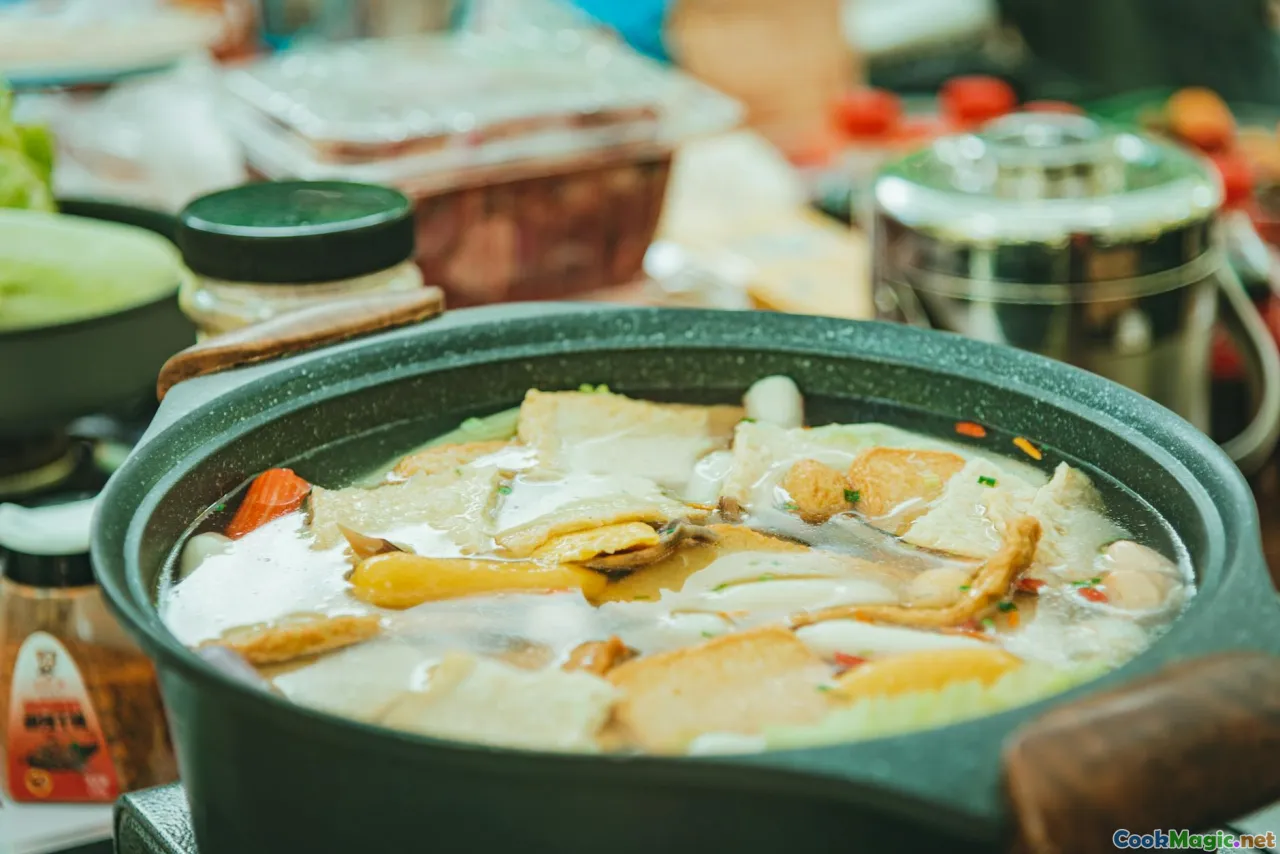
Vegetable stock from scraps is the fastest, easiest way to taste the difference between water and flavor.
A baseline method I trust:
- Ratio: About 1 part aromatics by weight to 6–8 parts cold water. If you don’t have a scale, imagine packing a medium stockpot halfway with scraps and covering by 2–3 inches of water.
- Scraps: Onion skins and ends, carrot peels, celery leaves and bases, leek greens, mushroom stems, parsley stems. Optional: a few tomato cores, a knob of ginger peel, a bay leaf, six whole black peppercorns.
- Technique:
- Rinse scraps to remove dirt or grit.
- Start with cold water. Cold water helps draw flavors out gradually and preserves clarity.
- Avoid salt. You’ll season the final dish, not the stock.
- Bring to a bare simmer—think lazy champagne bubbles—not a boil. Boiling breaks vegetables, clouds the stock, and leaches bitterness.
- Skim any foam with a ladle during the first 15 minutes. That’s denatured proteins and air, which can muddle flavor and clarity.
- Simmer 45–90 minutes. Taste every 20 minutes. When the broth smells like a garden after rain and tastes sweet-savory, it’s done.
- Add parmesan rind only in the last 30 minutes if using, to prevent stickiness.
- Strain through a fine mesh, then again through a damp towel if you want extra clarity.
The payoff is a stock that tastes like vegetables, not a compost pile. You’ll get a translucent amber with delicate lift—perfect for risotto alla Milanese, barley soup, or a quick miso broth with tofu and scallions.
Tip: Want extra body? Add a handful of dried mushrooms or a sheet of kombu in the last 20 minutes, then remove the kombu before it gets slimy. Umami without heaviness.
The Magic of Bones: Turning Roast Remains into Liquid Silk

Animal bones give stock that luxurious body—collagen—that sets into a wobble in the fridge. This gel isn’t a gimmick; it’s the tactile pleasure that makes sauce cling to roast chicken and gives soups a lip-smacking finish.
What I do with leftover roast chicken or turkey:
- Roast or re-roast bones: If the carcass wasn’t deeply browned at dinner, toss it onto a sheet pan with an onion, a carrot, and a split head of garlic. Roast at 425°F (220°C) for 25–40 minutes until mahogany. Maillard browning brings roasted coffee and caramel notes.
- Deglaze: Splash the hot pan with water or white wine, scraping the fond into your pot. Don’t waste those sticky bits.
- Ratio: About 1 kilogram bones to 3–4 liters cold water. Aromatics: 200–300 grams total of onion, carrot, celery, plus a bay leaf and peppercorns.
- Technique:
- Start cold. Cover bones with water, then bring up slowly.
- For clarity, you can blanch raw bones first: cover with cold water, bring to a boil, drain, rinse bones and pot, then proceed with fresh water and aromatics. Blanching purges blood and impurities. I skip this for roasted bones.
- Simmer at 185–195°F (85–90°C). Skim regularly for the first hour.
- Add a splash (1–2 teaspoons) of mild vinegar or a few crushed tomatoes to help extract collagen; you won’t taste the acid once finished.
- Cook: 3–4 hours for chicken/turkey, 6–8 hours for beef/veal bones. Taste along the way. Stop when the stock feels silky on your tongue and the bone cartilage gives at a prod.
- Strain gently. Don’t press the solids; that releases grit and cloudiness.
Once cool, scrape the fat cap into a jar—schmaltz. Fry potatoes in it, brush it on bread for a killer grilled cheese, or fold into matzo balls. The stock below should be glossy and lightly gelatinous, ready to turn a pan of mushrooms into a pan sauce or a bowl of leftovers into chicken and dumplings.
Sea-Scented Stock from Shells and Fish Bones

Seafood stock is quick and perfumed, like a wharf at dawn where boats clink and nets drip. Because it’s delicate, treat it gently.
Shrimp shell stock:
- Scraps: Shells and heads from 2 pounds of shrimp, onion skins, celery leaves, a strip of orange peel, a sprig of thyme, a few peppercorns.
- Toast the shells first: A film of oil in the pot, shells in, stir until coral and aromatic—about 3 minutes. The smell switches from raw-tidal to sweet-sea.
- Add aromatics and cold water to cover by 1 inch.
- Simmer 20–30 minutes. Taste at 15; bitterness creeps in if you go long.
- Strain. A teaspoon of tomato paste stirred in at the start gives body and color.
Fish stock (fumet):
- Use white-fleshed fish frames and heads: halibut, cod, sole. Avoid oily fish like mackerel or salmon—too assertive.
- Sweat a sliced onion and two leeks in butter with a pinch of salt; don’t brown. Add fish bones, a glass of white wine, then cold water just to cover.
- Add parsley stems and a bay leaf. Simmer very gently for 30–45 minutes. Skim meticulously.
- Strain and chill quickly. This is the backbone of a saffron bouillabaisse, a Breton fish stew, or a delicate sauce for poached cod.
In New Orleans, I’ve made shell stock from the leftovers of a boil—cayenne-stained shells, corn cobs, celery, and bay. That stock turns into a bisque that tastes like a jazz band—bright brass, smoky drum, sweet clarinet.
East to West: Brodo, Dashi, Master Stock, and the Cultures that Simmer
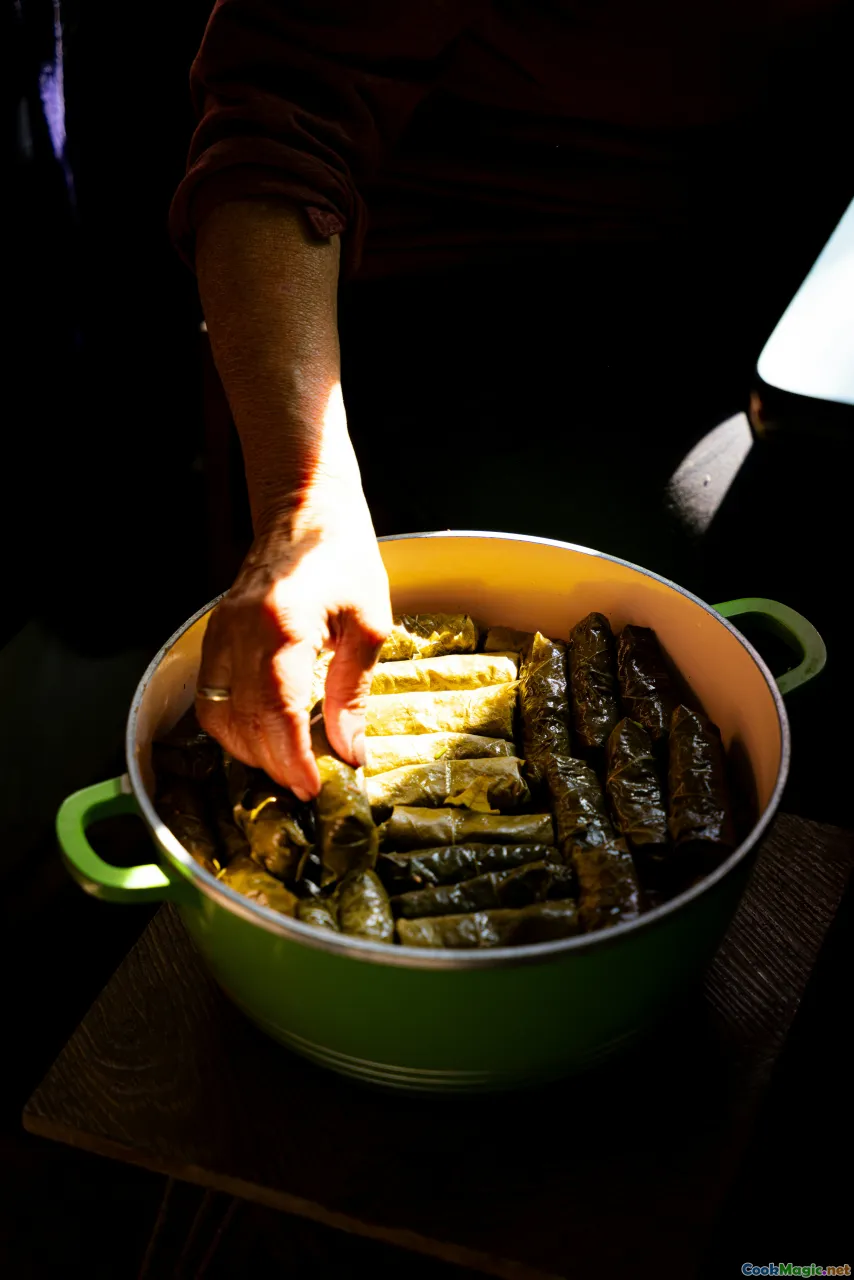
- Italian brodo: In Bologna, brodo for tortellini is an art. A capon or hen, a knuckle of beef, celery, carrot, onion—no peppercorns, sometimes no bay. Gentle simmer, crystal clarity. Served with nutmeg-scented tortellini, it’s winter medicine.
- Japanese dashi: A lesson in restraint. Kombu is soaked and heated until tiny bubbles gather; remove just before boiling to avoid sliminess. Katsuobushi flakes are added, steeped, and strained after a minute. Result: clean ocean brightness. Dashi from kombu ends and spent mushroom stems is an ideal use of scraps—just watch steep times so the kombu doesn’t dominate.
- Chinese master stock (lu shui): A perpetual, soy-based braising liquid with shaoxing wine, rock sugar, star anise, cassia, ginger, scallions. Used to poach and then re-poach ducks, eggs, pork. The cook cools, strains, and freezes the stock between uses. Each cycle intensifies it. Talk to Cantonese cooks and you’ll hear about master stocks older than their restaurants—a living cultural sourdough of the savory world.
- Jewish chicken soup: Sometimes called penicillin, made from a whole bird or bones, lots of dill and parsley stems, celery, and a careful simmer to keep it golden and clear. The schmaltz on top is saved like treasure.
- Vietnamese pho bo: Not a scrap soup, but a reminder that charred onion and ginger can perfume broth without bitterness when treated right. It’s a technique to borrow: char aromatics under a broiler or over flame and add to stock for a smoky sweetness.
Every stock tells a story about what’s plentiful and precious in a place. In your kitchen, scraps can be your map.
Heat and Time: Stovetop vs Pressure Cooker vs Slow Cooker
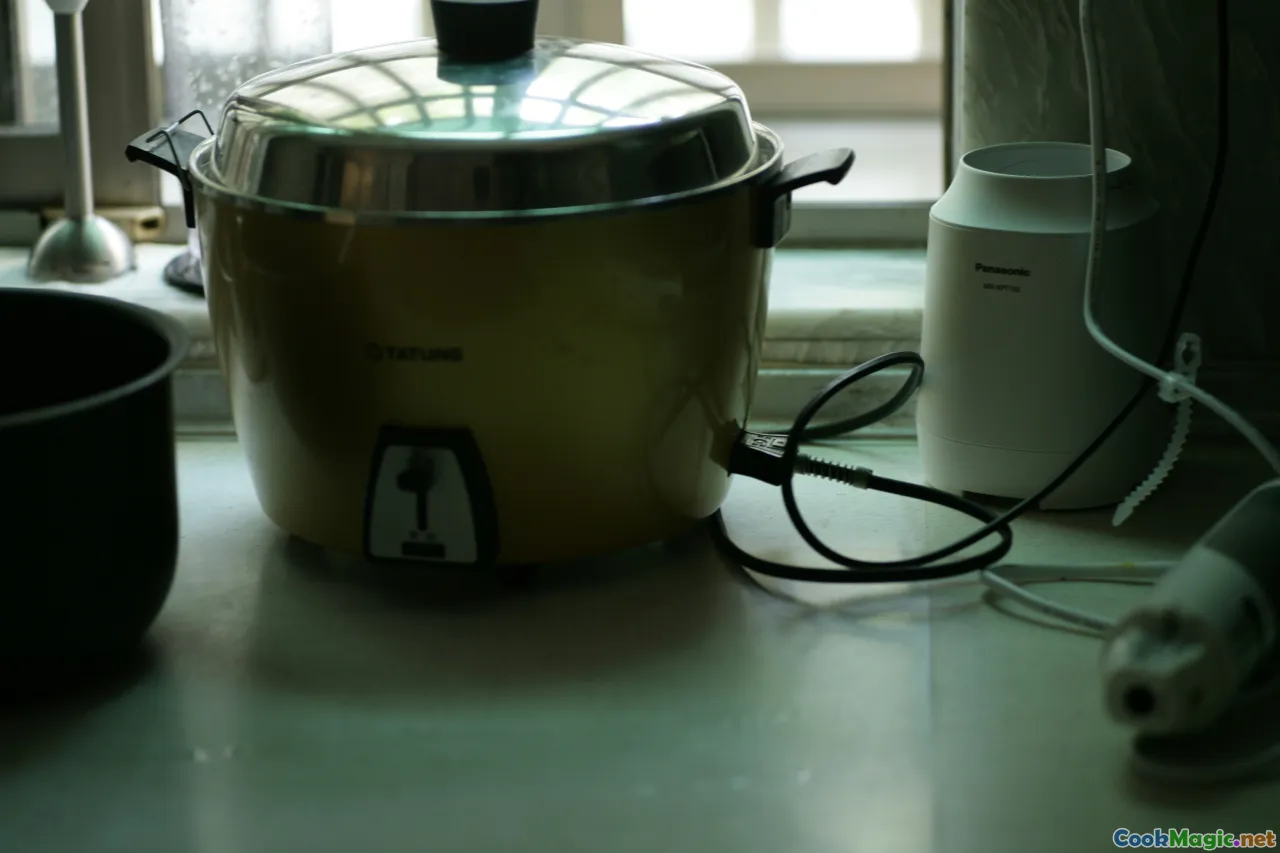
You can coax flavor out three ways; each has a personality.
- Stovetop: Best control over clarity and reduction. Easy to skim. Downside: attention. Great for fish, shellfish, vegetable, and refined chicken or veal stocks.
- Pressure cooker: Collagen extraction skyrockets; a chicken stock can set like jelly in 45 minutes at high pressure. Flavor is round and saturated, sometimes a touch muddier if overcooked. I avoid pressure for fish stocks—bitterness creeps in quickly.
- Slow cooker: Set-and-forget, safe, and energy efficient. The tradeoff is less evaporation (so less natural concentration) and reduced skimming. Keep the lid ajar with a chopstick to maintain a gentle simmer and allow some reduction.
A hybrid I like: Start on the stove to bring to a simmer and skim, then transfer to slow cooker overnight. Clearer than slow cooker alone, easier than babysitting.
Clarity, Body, and Color: The Craft Behind the Simmer

Three metrics guide me:
- Clarity: Start cold, avoid violent boils, skim early, and don’t stir aggressively. When straining, ladle gently rather than dump, and never press solids. If you need brilliant clarity for consommé, make a clarification raft: whisk 2 egg whites with crushed ice, a handful of mirepoix, and lean ground meat; stir into cold stock, bring slowly to a simmer. The raft attracts and traps particles; ladle clear broth from a notch in the raft.
- Body: Collagen transforms into gelatin around 160–180°F (70–82°C). Bones rich in cartilage—chicken feet, wings, veal knuckles—deliver body. Slight acidity helps. You know it’s right when a chilled stock wobbles like panna cotta.
- Color: Onion skins, roasted bones, tomato paste, and time deepen hue. For a paler stock (for white sauces), skip skins and roast, and blanch the bones first.
Remember: haste and rolling boils trade speed for elegance. Stocks prefer patience.
Aromatics by Identity: From Charred Pho Onions to Italian Soffritto
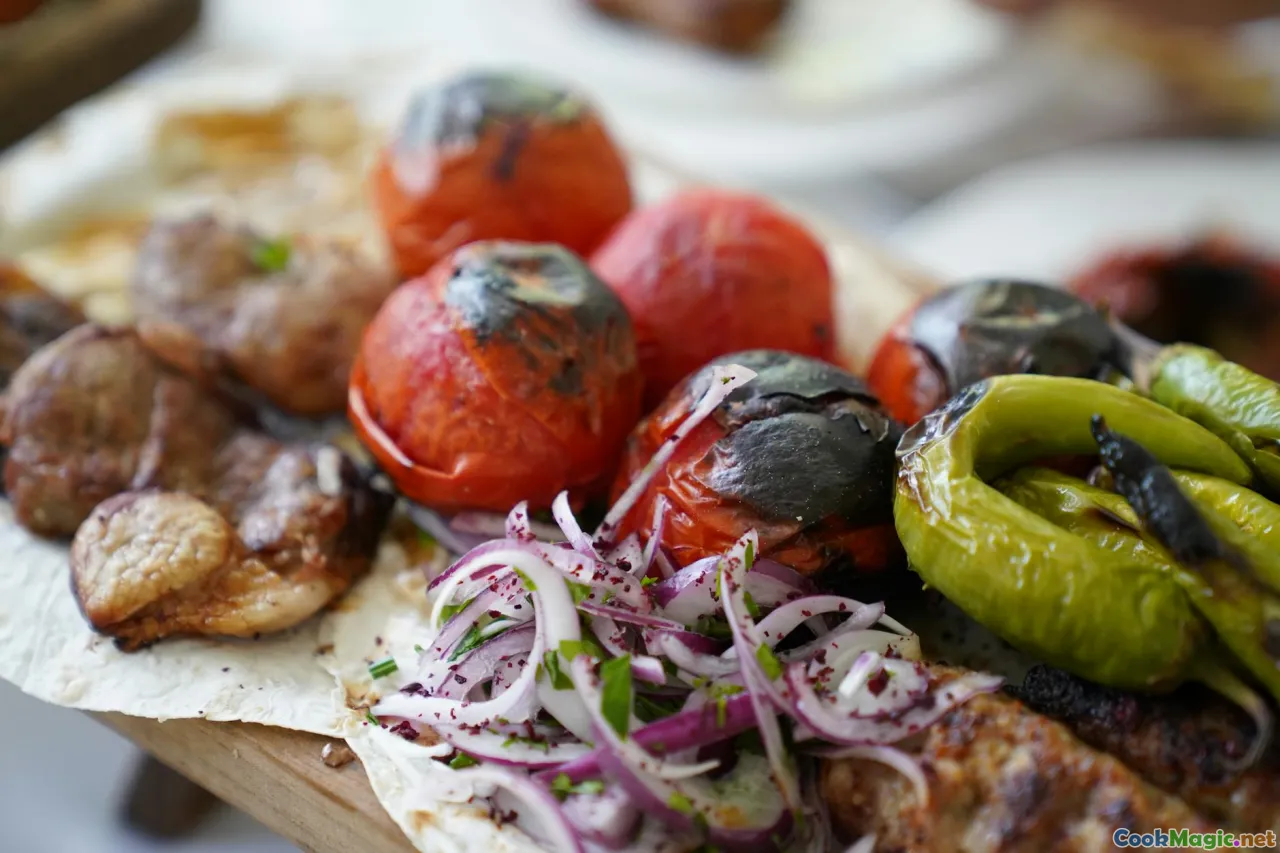
Aromatics are the accent you choose. Try these cultural cues:
- Italianate: Onion, carrot, celery (soffritto), parsley stems, a small piece of tomato, and a Parmigiano rind near the end. Bay leaf or a sprig of rosemary. For minestrone and risotto.
- French: Mirepoix with leeks and thyme, perhaps a splash of white wine. Peppercorns, bay. For sauces like velouté and demi-glace.
- Mexican-leaning: Onion, garlic, celery, tomato trimmings, cilantro stems, a guajillo or ancho chile toasted and torn in. Lime peel at the very end. For pozole or caldo-based salsas.
- Vietnamese-inspired: Char a halved onion and a knob of ginger under the broiler; add cinnamon or cassia and star anise sparingly. Fish sauce is a finish, not a simmering liquid, or it can turn acrid.
- West African nod: Onion, ginger, garlic, a bit of smoked fish skin or crayfish if you have it, and a Scotch bonnet chile pierced once. For jollof or egusi soups.
Scraps are cues, not rules. Recognize how a toasted chile changes your stock from background music to a lead guitar.
Troubleshooting and Rescue Operations

- Cloudy stock: It still tastes great in stews and braises. For clear soups, clarify with an egg white raft or accept the rusticity and strain again through a coffee filter.
- Bitter stock: Often from overcooked brassicas, burnt garlic, or too-long shellfish simmering. Rescue by diluting with unsalted water and reducing gently with a piece of toasted bread and a slice of raw potato—the starch can absorb some harsh notes. Then strain and finish with acid (lemon) and fat (butter) to round edges.
- Flat stock: You under-extracted. Reduce to intensify or add umami boosters at the end: a splash of soy sauce, a dried shiitake quick-steeped in a ladle of stock, or a small piece of parmesan rind simmered for 15 minutes.
- Too salty: Never salt stocks, but if you inherit a salty pot, add unsalted water and a few raw potatoes; simmer 15 minutes; strain. Or fold into low-salt recipes where it will be diluted.
- Oily surface: Chill and remove fat cap. Use a fat separator for immediate use. A dab of paper towel can skim sheen in a pinch.
Treat mistakes as lessons from the pot. It’s honest feedback.
Safety, Storage, and the Science of Cooling

Food safety keeps stock friendly, not funky.
- Cool quickly: Pour hot stock into shallow pans and set in an ice bath. Stir to drop the temperature below 70°F (21°C) within an hour, and below 40°F (4°C) within two hours.
- Storage times: Refrigerate up to 4–5 days. Freeze up to 3 months (plain stocks), 6 months if defatted and stored airtight.
- Freeze smart: Ice cube trays for quick pan sauces; muffin tins for 1/2-cup pucks; deli containers for quarts. Label with date, type, and salt status.
- Reheat to a rolling boil for at least one minute before serving.
- Master stock safety: If you keep a soy master stock, strain after each use, bring to a boil, cool quickly, and store refrigerated or frozen. Salt and soy help—but don’t rely on them alone.
- Compost solids: The flavor is spent, but the fiber isn’t. Don’t feed onion or garlic to pets.
A good stock should smell like what you cooked, not like a science experiment gone wrong. The nose knows.
Flavor Finishes: Rinds, Stems, and Last-Minute Magic
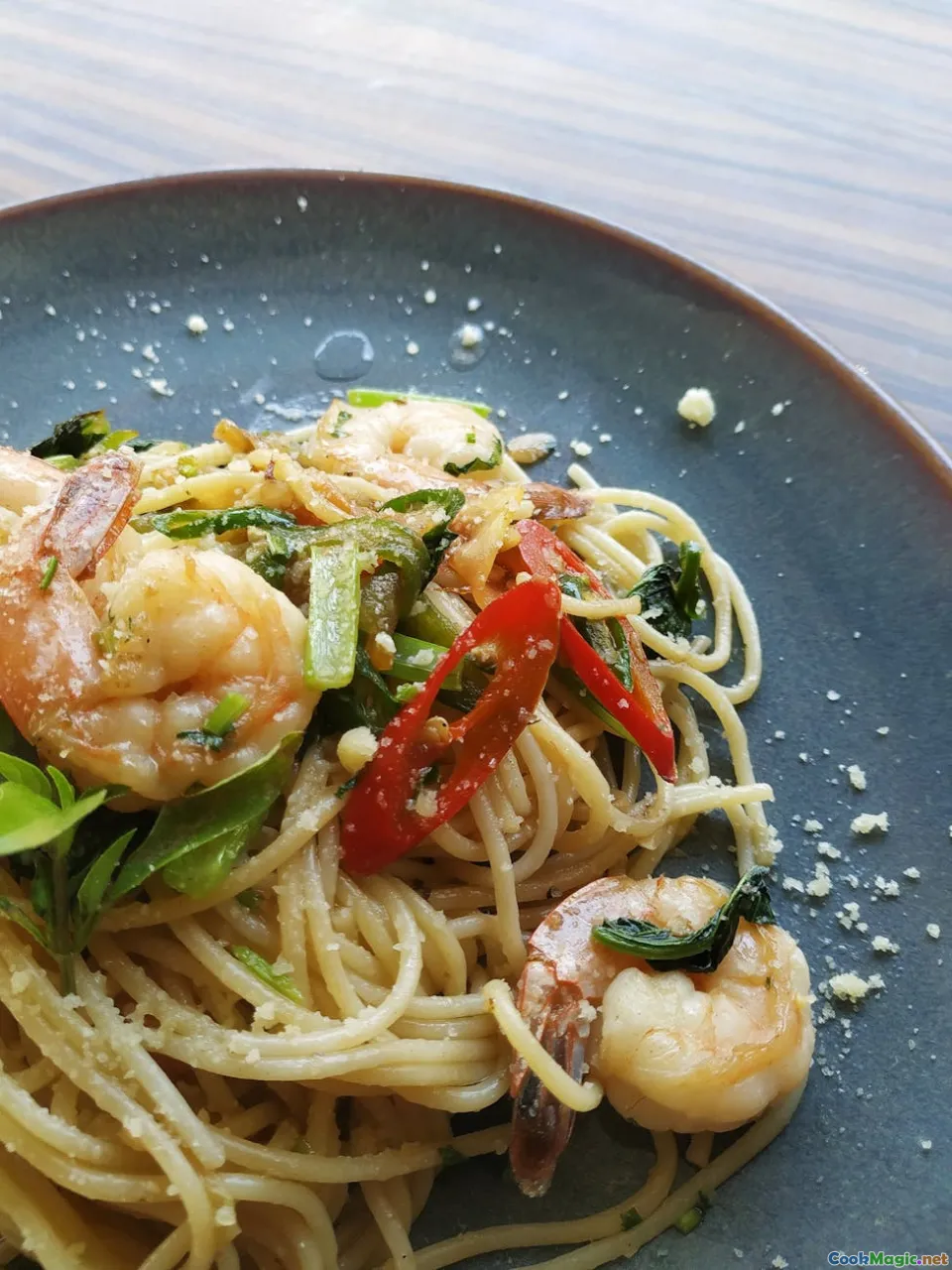
Think of stock like a great photograph; finishing touches are the edit that makes it sing.
- Parmesan rind: Add in the last 20–30 minutes for savory sweetness; fish it out before storing.
- Miso: Whisk a spoonful into hot (not boiling) vegetable stock right before serving for miso soup or to enrich braises. Boiling can dull its aroma and kill beneficial microbes.
- Seaweed: A strip of kombu or a sprinkle of wakame steeped 10 minutes adds oceanic depth.
- Herb stems and citrus peel: For brightness, steep parsley stems or a strip of lemon zest for 5 minutes off heat.
- Roasted garlic paste: Mash a clove into the pot at the end for fragrance without bite.
- A knob of butter or a glug of olive oil: Fat carries flavor. A glossy finish makes sauces glide.
When you season, remember the stock’s future job. Keep finishes subtle unless the stock is being served as soup right away.
What to Cook with Your Stock: Specific Dishes I Love

- Risotto alla Milanese with vegetable stock and a parmesan rind melted in: Stir saffron into hot stock so the rice drinks up sunshine. The stock’s sweetness supports the saffron’s metallic hum.
- Roman stracciatella: Beat eggs with grated Parmigiano and pepper; whisk into gently simmering chicken stock until ribbons set; finish with lemon. Comfort with a Roman accent.
- Chicken and dumplings, Carolinas-style: A stock heavy with roast poultry bones makes the dumplings luxuriant. The aroma takes me straight to a church supper hall.
- Gumbo in New Orleans: Dark roux, the holy trinity (onion, celery, bell pepper), and a shellfish stock from last night’s peel-and-eat shrimp. Echoes of a brass band in each spoonful.
- Hanoi-style noodle soup: Not quite pho, but a clear beef-chicken hybrid stock perfumed with charred onion and ginger, a dash of fish sauce at the table, a tangle of herbs.
- Congee for mornings: Simmer leftover rice in chicken stock until it relaxes into porridge. Top with scallion oil and a jammy egg.
- Beans, simply: Navy beans simmered in smoked turkey bone stock until tender; finish with vinegar and chopped herbs. The broth clings to the spoon.
- Polenta: Cook cornmeal in corn cob stock; the porridge smells like August and tastes like corn amplified.
- Pan sauces: After searing mushrooms or pork chops, deglaze with a splash of wine and a ladle of stock, reduce, mount with butter. Dinner is done.
Use is where stock proves its worth. Water cooks. Stock nourishes.
A Year of Scrap Stocks: Seasonal Templates
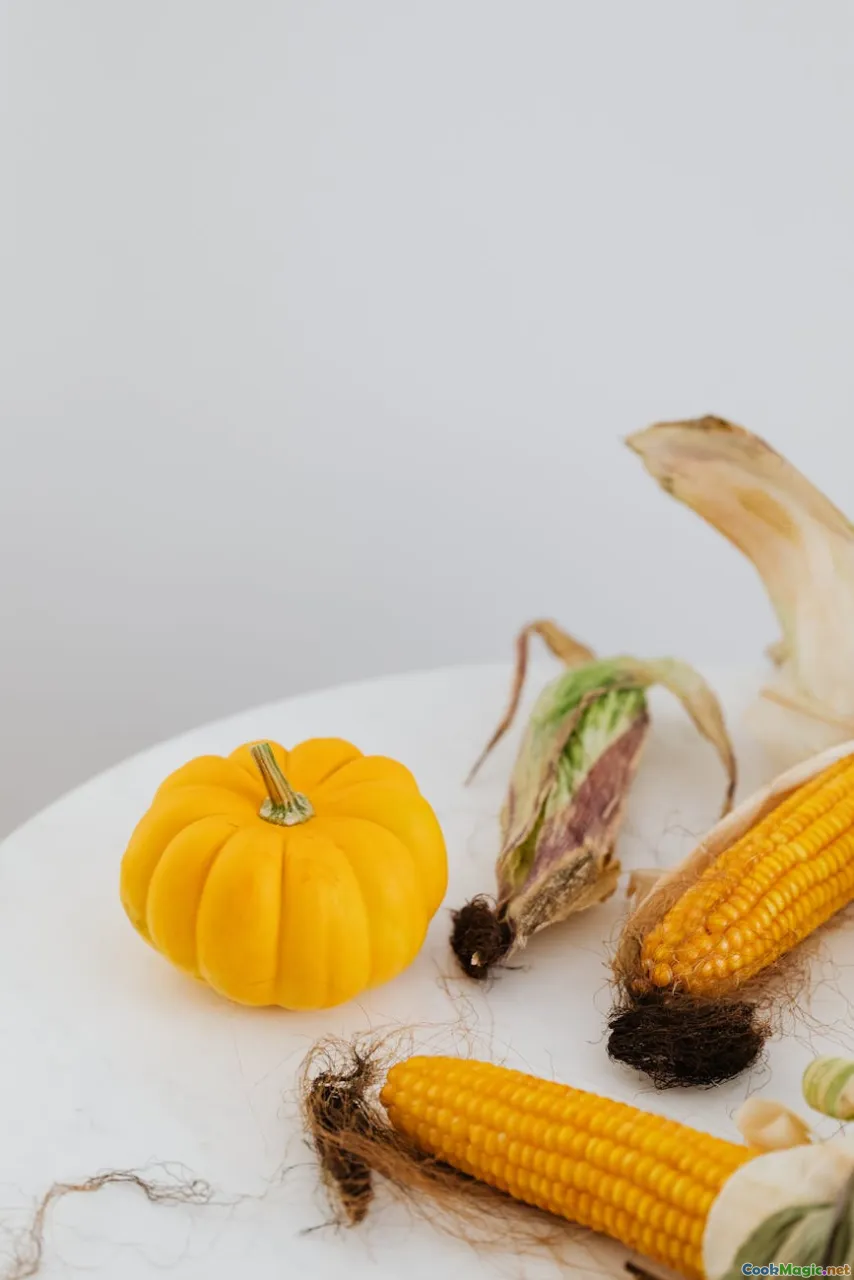
Spring: Green and bright
- Scraps: Leek tops, scallion roots, asparagus ends, parsley and dill stems, ginger peels.
- Method: Short simmer—45 minutes—to keep it crisp and aromatic.
- Use: Asparagus risotto, spring vegetable soup with peas and torn mint, tarragon chicken braise.
Summer: Sweet sun in a pot
- Scraps: Corn cobs, tomato cores and peels, basil stems, zucchini ends (few), onion skins.
- Add a parmesan rind at the end.
- Use: Corn chowder, tomato risotto, summer minestrone with pesto swirled in.
Autumn: Roasted and warm
- Scraps: Roasted carrot peels, onion skins, mushroom stems, celery leaves, thyme stems.
- Optional: A few squash peelings—but not too many; bitterness hides there.
- Use: Barley-mushroom soup, pan sauces for roasts, braised greens.
Winter: Deep and restorative
- Scraps: Poultry carcasses, beef knuckles, ham bones, bay, peppercorns, leek greens.
- Long simmer for body.
- Use: French onion soup under a lid of bubbling Gruyère, chicken and dumplings, beans and greens with pot likker.
Stock is seasonal because scraps are seasonal. Lean in to that rhythm; your pot will taste of the calendar.
Tools I Actually Use

- A heavy 8–12 quart stockpot: Stainless with a thick base. Even heat, no scorching.
- A fine-mesh strainer and a chinois: The strainer for general use, the chinois for velvety clarity.
- A skimmer or ladle: Skimming is meditation.
- A spider: To fish out large bones without splashing.
- A fat separator: Useful when you need a clear sauce fast.
- Sheet pans: For roasting bones and collecting drips for deglazing.
- Ice cube trays and deli containers: Portioning is power.
- Marker and tape: Label everything. Your future self will thank you.
Three Precise Scrap-Stock Recipes You Can Make Tonight
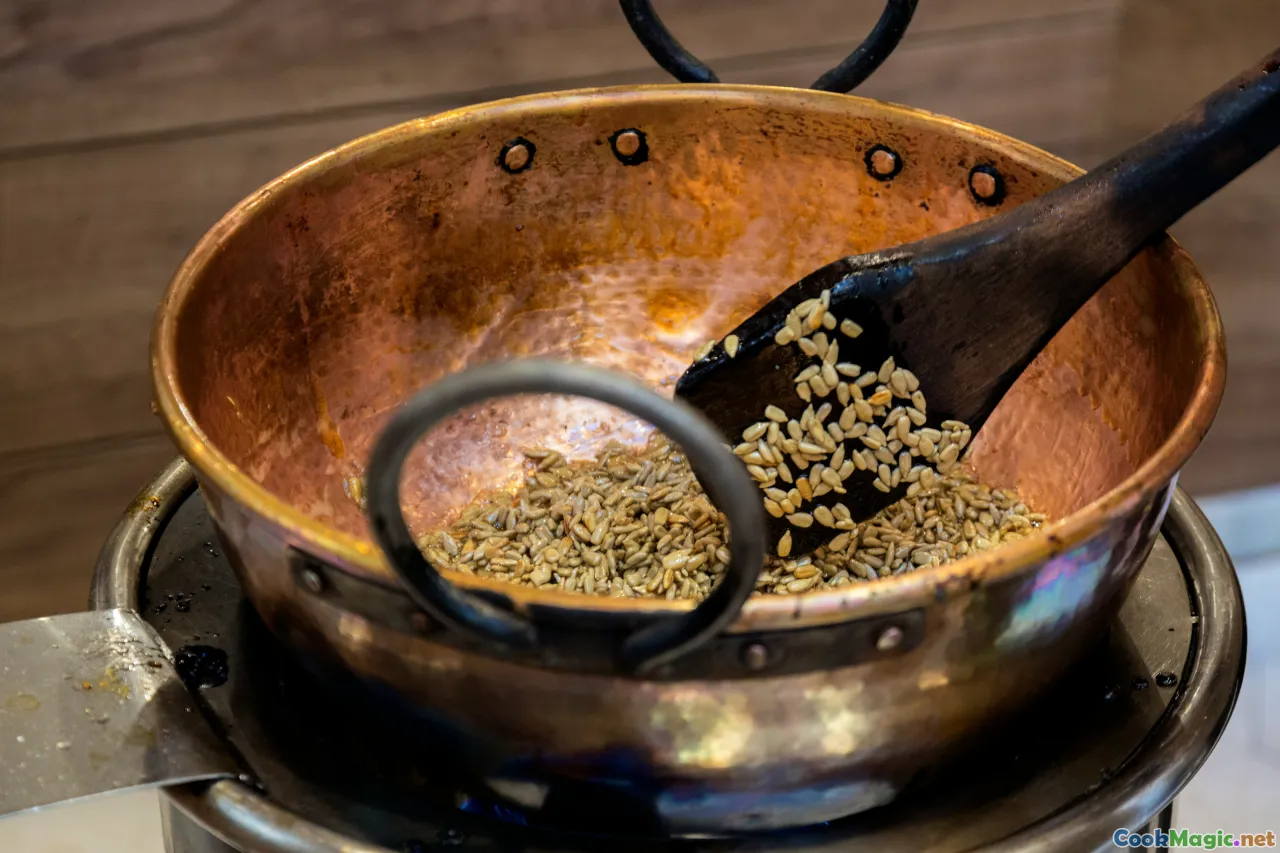
- Corn Cob–Miso Broth
- Scraps: 6 corn cobs (kernels removed), 1 onion skin and top, 2 celery stalk ends with leaves, 1 tablespoon dried shiitake stems, parsley stems.
- Method:
- Cover cobs and aromatics with 2 quarts cold water. Simmer 45 minutes.
- Strain. Whisk in 1–2 tablespoons white miso off heat.
- Use: Ladle over blanched summer vegetables and tofu; finish with sesame oil and scallions. The broth tastes like buttered corn fields after rain.
- Tomato–Parmesan Brodo from Pasta Night
- Scraps: Cores and skins from 6 tomatoes, 1 parmesan rind, 1 small onion, 2 garlic clove skins, basil stems, peppercorns.
- Method:
- Sweat onion in olive oil until translucent. Add tomato scraps and cold water to cover by 1–2 inches.
- Simmer 1 hour; add parmesan rind for the last 20 minutes.
- Strain and finish with a strip of lemon zest steeped 5 minutes.
- Use: Tortellini in brodo, or as a base for poaching white fish; the broth hums with sun-warm tomato and nuttiness.
- Smoked Turkey Bone Pot Likker
- Scraps: The frame of a smoked turkey leg, collard stem trimmings, onion skins, a dried chile, a few garlic cloves.
- Method:
- Cover with 3 quarts water; simmer 3 hours, skimming as needed.
- Strain; reduce by a third to intensify. Finish with apple cider vinegar to brighten.
- Use: Cook beans or braise collards. The liquid clings, smoky-salty, the kind of broth that invites cornbread to the table.
The Pot That Remembers: A Personal Note
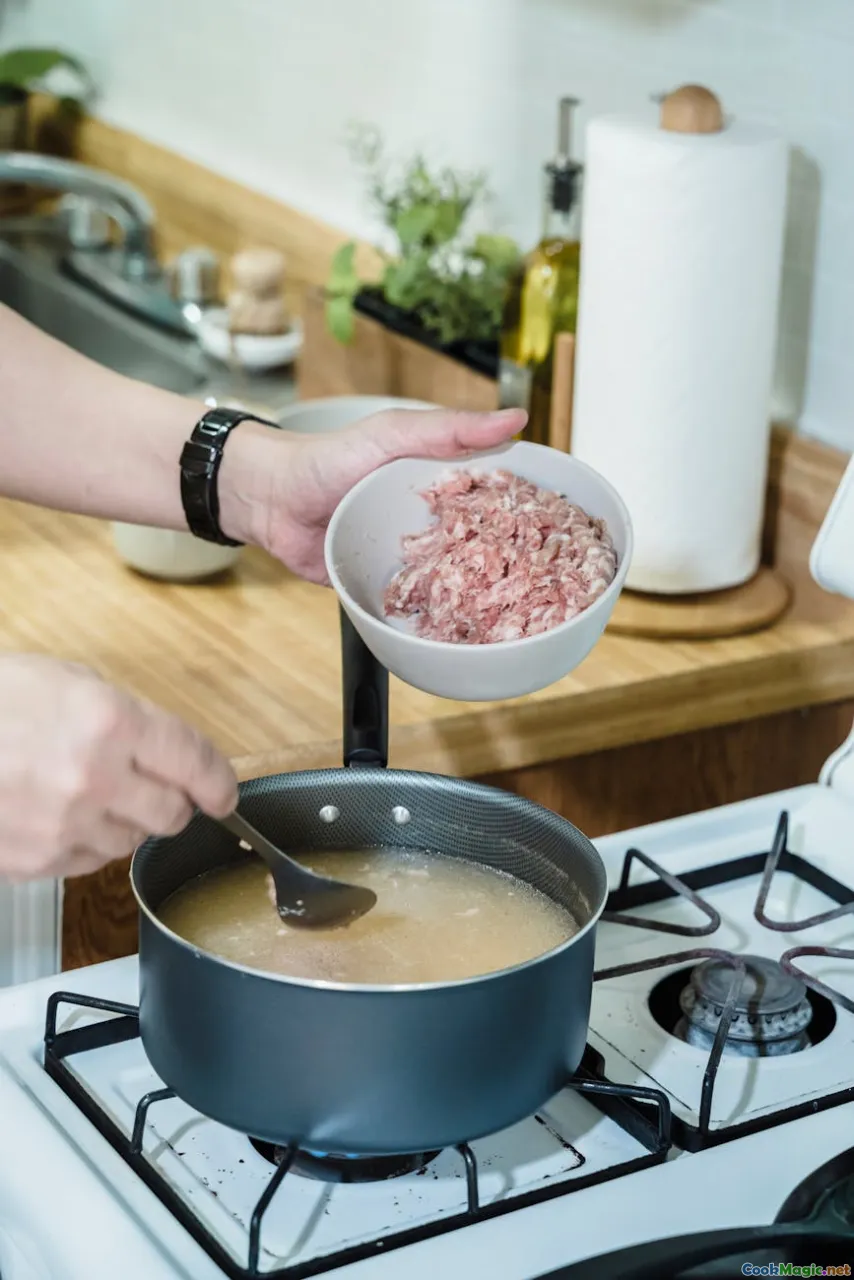
I learned to keep a scrap bag from my grandmother, who grew up in a time when thrift wasn’t a trend; it was survival. Her freezer was a card catalog of small stories: a bag of shrimp shells from a visit to the coast, lemon peels from Sunday pies, a handful of dill stems from pickles she’d canned. On winter afternoons, she would stand near the stove, one hand on the pot’s rim, the other holding a spoon worn thin over decades. She didn’t taste the broth as much as she listened to it—the gentle click of bone against bone, the way steam curled then disappeared.
In restaurant kitchens, the stock pot is often a humble corner, the out-of-the-way burner. But it’s where cooks talk, where scraps from a dozen dishes learn to harmonize. At two in the morning in Chicago, I watched snow build on the alley sill while a veal stock breathed in and out. The room smelled like roasted bones, thyme, and the faint metallic edge of simmering iron. That pot kept me company. It still does, in my apartment, now with quieter scraps: leek tops from Tuesday’s omelet, the rind from a picnic wedge of Parmigiano-Reggiano, the chicken carcass from a friend’s potluck.
Making stock from scraps is an economical act and an ecological one, yes. But at heart, it’s an act of attention. You’re saying: this onion skin has value. This shell remembers the sea. This bone still has a story to tell. Every time I ladle a golden broth into a pan or bowl, I taste a week’s worth of small decisions—saved, labeled, simmered—gathered and transformed.
Put a pot on this weekend. Tie the bouquet of herb stems with kitchen twine, rinse the leek greens, crack the chicken bones to expose their marrow. Bring it to a tremble, skim the first foam, and let your kitchen begin to smell like something you want to come home to. When you lift the lid an hour later, you won’t just find stock. You’ll find the food you cooked, the places you’ve eaten, and a few memories worth keeping alive in the gentle, steady simmer of your own making.









